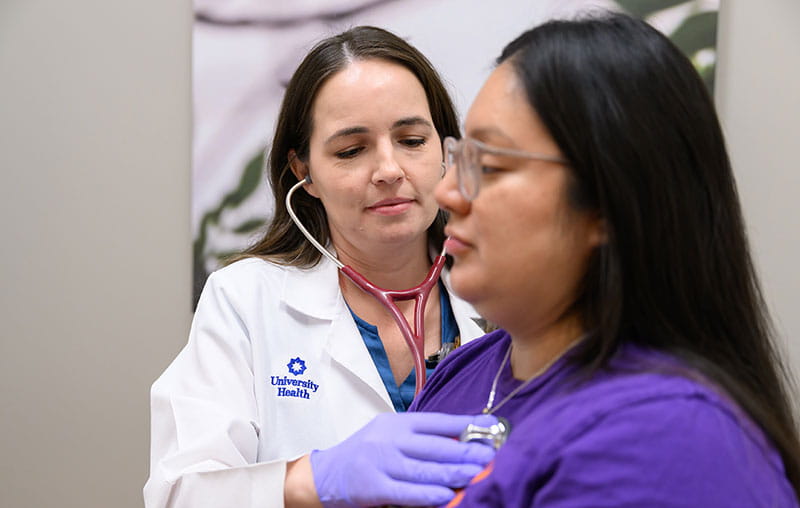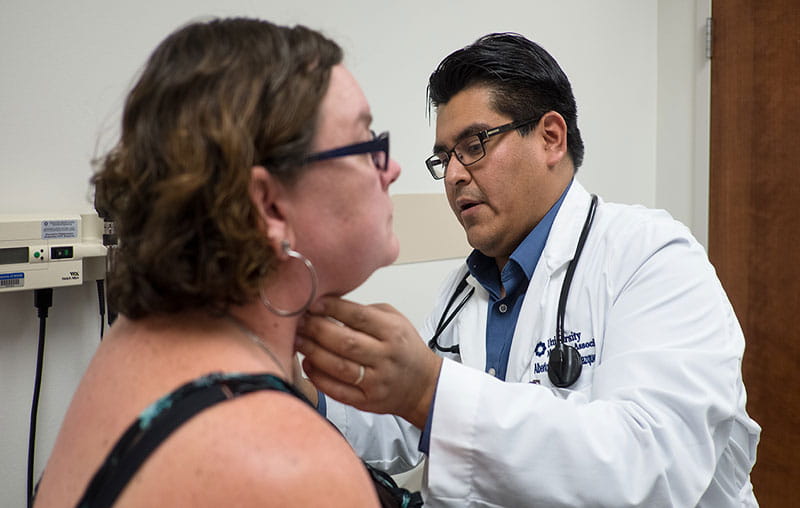If you have been told that you have high blood pressure, you are not alone. High blood pressure affects nearly half of all Americans. Many people may not even know they have it.
Being told that you have high blood pressure can be scary and confusing. Like many medical terms, the words may not always mean what you think, and looking up these terms online only adds to the uncertainty. This blog will help explain high blood pressure basics to help separate facts from fiction.
What Is High Blood Pressure?
Each time your heart beats, it pumps blood through vessels (called arteries) to the rest of your body. Blood pressure is measured by how hard the force of blood pushes against the walls of your arteries. This force is measured in millimeters of mercury (mm Hg).
High blood pressure is when the pressure in your arteries is consistently higher than normal. Hypertension is the medical term for high blood pressure.
“Your blood pressure changes throughout the day based on your activities so it’s important to monitor your blood pressure readings,” says Dr. William Godinez. “High blood pressure typically has no signs or symptoms. That’s why it is called the ‘silent killer.’ It is important to keep up with your doctor visits and make the necessary lifestyle changes to improve your blood pressure.”
What Are the Risk Factors for High Blood Pressure?
There are many risk factors that increase your chances of developing high blood pressure. Some risk factors can be controlled, while others cannot. Learn more about risk factors for hypertension in this blog.
Understand Your Blood Pressure Readings
Blood pressure is defined by two numbers:
- Systolic pressure – measures blood pressure in the arteries when your heart is beating and pumping blood
- Diastolic pressure – measures blood pressure in the arteries while your heart is at rest, between beats
For example, blood pressure is recorded as a ratio like 116/76. This reads as “116 over 76” mmHg.
How to Track Your Blood Pressure
The only way to find out if you have high blood pressure is to check it regularly. It is recommended for individuals who are 40 years and older without a history of hypertension to check their blood pressure annually. Screening should happen more frequently in people with risk factors.
For proper diagnosis of high blood pressure, it must be confirmed with a health care provider using an average based on two or more readings obtained on two or more occasions.
Home monitoring can help your health care provider determine whether treatments are working. It is recommended to use an automatic upper-arm cuff to measure your levels.
Tips to Monitor Blood Pressure at Home
Monitoring your home blood pressure is easy if you follow these steps:
Be Still
- Don’t smoke, drink caffeinated drinks or exercise within 30 minutes before measuring
- Empty your bladder and make sure you rest at least five minutes before checking
Sit Correctly
- Sit with your back straight and supported with feet flat on the floor and legs straight
- Your arm should be supported on flat surface (ex., table) with upper arm at heart level
- Ensure bottom of cuff is directly above bend of the elbow
Measure at the Same Time Every Day
- It is best to check readings daily, ideally 2-3 hours after taking your medications and during the week before your next doctor appointment
Take Multiple Readings and Record the Results
- Ideally, you should check and record your levels twice daily – morning and evening
A record of your blood pressure readings provides a “time-lapse” picture of your blood pressure to help your providers manage it.
Find out more on how to measure your blood pressure properly, advice on monitors that are validated and blood pressure logs.
Tips to Manage Your Blood Pressure
You can manage your blood pressure and keep it in check by:
Eat Smart
Make healthy choices at the grocery store and when eating out. Eat a heart-healthy diet high in vegetables, fruits, and whole grains. Excessive salt can increase your blood pressure.
Move More
Getting regular physical activity helps your heart and blood vessels stay healthy. Set a goal of getting at least 150 minutes of exercise per week, or about 20 minutes per day. Exercise doesn’t have to be intense aerobic exercises, like running or resistance training, though cardio-related exercises are an excellent way to prevent heart disease.
Talk with your insurance provider to see if they cover some or all cost of a gym membership. Additionally, University Health offers great exercise events throughout the year as well as classes and programs at the Fitness Center at Texas Diabetes Institute.
Manage Your Weight
Being overweight or obese increases blood pressure and other heart related diseases. To determine if your weight is in a healthy range, you can calculate your body mass index (BMI).
No Nicotine
Smoking or using other tobacco products causes your arteries to contract, which increases blood pressure and risk for heart attack and stroke.
Learn more about how University Health providers can help you quit smoking.
Limit Alcohol
Do not drink too much alcohol as it can increase blood pressure. Men should have no more than two alcoholic drinks per day, and women should have no more than one alcoholic drink per day
Stay Well
Practice mindfulness, learn to relax, get enough sleep and take time to do things you enjoy. Incorporating these practices into your daily routine can improve your heart health and have other positive benefits too.
In addition to making positive changes, some people may need to take medications to manage their blood pressure. It is very important to take your medications on time and on a routine schedule
University Health Pharmacies & Heart Care
It takes a team to treat your high blood pressure effectively. University Health offers the most advanced care through our renowned Heart & Vascular Institute.
Your cardiologists will guide you through lifestyle changes and may also prescribe medications to help control your blood pressure.
University Health also provides pharmacy services. Pharmacists are experts in medication management and can provide education, counseling, blood pressure monitoring and medication adherence.
University Health has six pharmacies around the greater San Antonio area that can fill your blood pressure medications and provide counseling. Our pharmacies will work with patients to the best of our abilities to make sure no one goes home without medications. We also provide free blood pressure monitoring!





